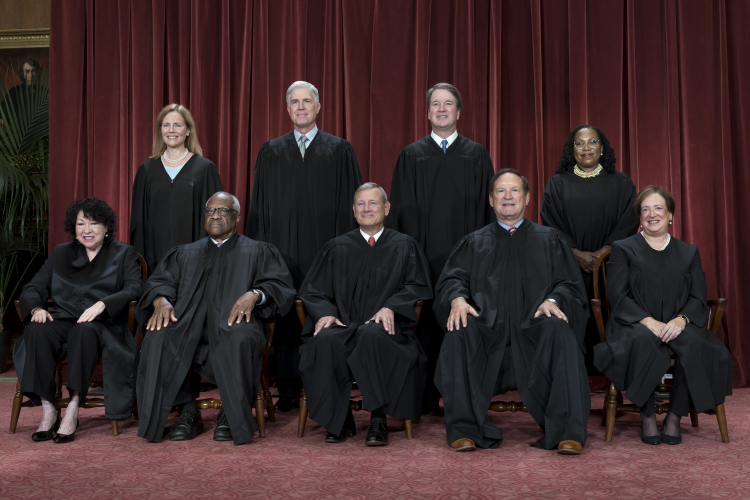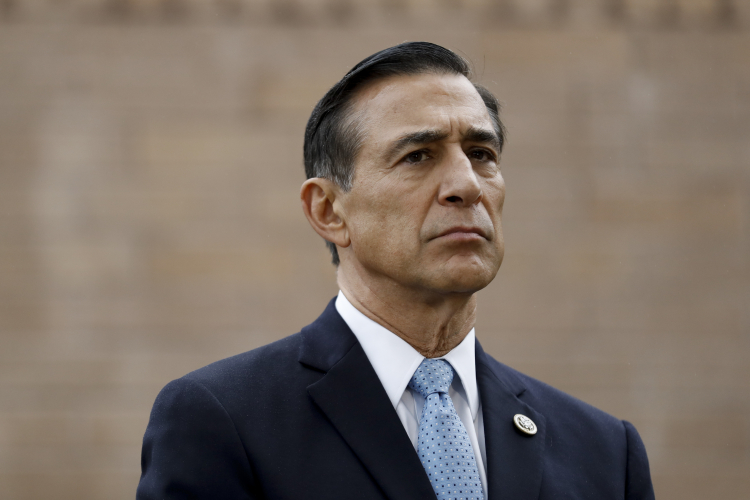On June 27, the Supreme Court handed President Donald Trump what he hailed as a “GIANT WIN,” finding that lower courts had “likely” overstepped in ordering universal injunctions blocking many of the president’s policies.
While the Court’s 6-3 opinion in Trump v. CASA appeared to disarm Trump’s opponents of perhaps their most potent legal weapon, his adversaries had other ideas.
In the weeks since, Trump’s challengers have seized on the ruling’s openings – especially the use of class-action suits in which a handful of plaintiffs may allege harm and seek relief on behalf of all similarly situated parties – to continue leveraging lower court judges to block the president’s orders.

Norm Eisen, one of the architects of a so-called “rule of law and shock and awe” strategy to blanket the administration with dozens of lawsuits, quickly helped bring a case before New Hampshire’s district court. The suit aimed to enjoin the president’s ban on birthright citizenship not only with respect to five named plaintiffs, but for “a nationwide class of all other persons similarly situated.”
On July 3, the district court ruled in the plaintiffs’ favor in that case, over the Trump administration’s objections. Other plaintiffs prevailed in a separate case in the D.C. District Court challenging the president’s crackdown on asylum claims at the southern border.
Scholars on both sides of the universal injunctions issue agree that CASA’s impact may be limited.
Stanford Law Professor Mila Sohoni, a supporter of universal injunctions, wrote in CASA’s aftermath that “the court may have in the end accomplished little beyond handing the executive branch a litigation victory.”
Josh Blackman, a constitutional law professor at South Texas College of Law Houston, who has opposed universal injunctions in congressional testimony, told RealClearInvestigations, “I’m not sure how much CASA will actually check the ability of lower courts to halt presidential policies.”
By refusing to foreclose class actions and several other paths to nationwide or universal relief, many scholars argue, the Supreme Court has set itself up to preside over future battles over the limits to these remedies – perhaps expanding its power relative to the executive branch. As a result, they anticipate that the court’s ruling may be the beginning of a war between the executive and judiciary rather than its culmination.
Class Action Workaround
Under the pre-CASA regime, challengers to presidential action needed only to secure a single favorable ruling from one of hundreds of district court judges anywhere to block administration policies everywhere – leaving key initiatives stalled, sometimes for months or years, pending litigation often not resolved until the Supreme Court had its say.
Supporters of universal injunctions argued that they were necessary to protect plaintiffs and the public at large from irreparable harm while challenges to allegedly illegal policies slowly wound their way through the courts. Critics countered that such relief represented an unprecedented and illegitimate expansion of the lower courts’ authority, hampering the democratically elected president from carrying out his duties.
Democrats and Republicans alike, who have at times each decried universal injunctions and alleged politicization in the judiciary among judges who issued them, also lamented that such injunctions incentivized forum shopping: Plaintiffs strategically file suit in likely sympathetic courts to combat disfavored presidential policies nationwide.
An earlier RCI analysis of 350 cases brought against the second Trump administration through June 11, 2025, found that plaintiffs brought 80% of those cases before just 11 of the nation’s 91 district courts, almost all of them located in areas dominated by Democrats and presided over by Democratic nominees.

While the Supreme Court ruled that universal injunctions were inconsistent with both law and legal tradition, the court’s majority highlighted and left open several possible avenues through which lower courts could thwart executive action by granting universal relief or its equivalent – and open the judiciary to potential charges of politicization.
First among them is a class action lawsuit. In theory, class actions should make it harder for parties to pursue and judges to unilaterally issue broad injunctions that block an executive order. In a class action suit, sometimes diverse and large groups of plaintiffs must coordinate their case, creating practical challenges. The New Hampshire case brought with the help of Eisen’s Democracy Defenders Fund showed, however, that determined challengers can create classes quickly, using just a few people to represent a far larger number of individuals.
Perhaps the bigger hurdle for plaintiffs seeking to bring a class action suit is that they must satisfy several requirements to achieve certification and advance their case. Judges determine whether to certify a class by looking to four factors under federal Rule 23: Among other things, plaintiffs must demonstrate the need to bring such a suit on behalf of a group; that their arguments are representative of those in the group; and that they will faithfully represent the unnamed parties comprising the group. Rule 23 often requires significant briefing and analysis. If a judge certifies a class, the defendants can immediately appeal, at further time and cost.
Despite this seemingly higher threshold for challengers to presidential policies, Justice Samuel Alito cautioned in a CASA concurrence, joined by Justice Clarence Thomas, that lower courts could render the decision moot should they take a too-lax approach to class actions and liberally permit the creation of universal classes.
While acknowledging that Rule 23 “may permit the certification of nationwide classes in some discrete scenarios,” Alito counseled that lower courts be “scrupulous” in adhering to the rule’s “rigors,” including conducting a robust class certification analysis. “Otherwise,” Alito warned, “the universal injunction will return from the grave under the guise of ‘nationwide class relief….’”
Trump Thwarted Again
Just five days after the CASA decision, one judge seemed to vindicate Alito – at least in the eyes of the Trump administration. On July 2, D.C. District Court Judge Randolph D. Moss certified a class consisting not just of the 13 people and three nonprofit groups that brought the suit, but of everyone who is or will be subject to Trump’s first-day proclamation prohibiting southern border crossers from seeking asylum, in an opinion finding that policy to be unlawful and unconstitutional.

Following the D.C. decision, Chad Mizelle, chief of staff for Attorney General Pam Bondi, tweeted: “The ink is barely dry on SCOTUS’s decision striking down universal injunctions, yet rogue district judges are continuing with business as usual – issuing universal injunctions under the guise of ‘class actions’ that cover anyone and everyone in the world. SCOTUS must end the #judicialcoup.”
The administration has appealed Judge Moss’ ruling.
Plaintiffs have used class actions to stymie the Trump administration in several other cases, including those involving the deportation of immigrants and disclosure of information regarding January 6 investigators.
University of Chicago Law Professor Samuel Bray, a prominent critic of universal injunctions, cited widely by the Supreme Court’s CASA majority, told RCI that “The existing class action standards can be difficult when bringing a class action for damages, but they are easy to meet when the suit is challenging a government action or policy that applies to the whole class in the same way.”
UCLA Law Professor David Marcus, who supported universal injunctions, agrees, writing that “Courts overwhelmingly favor class certification in cases for injunctive relief against government defendants.” He conducted a study of several hundred district court decisions in “public interest cases” from 2011-2020, finding that around 75% proved favorable to plaintiffs.
Georgetown University’s Stephen Vladeck, who has testified before Congress in favor of universal injunctions, says that ultimately a proliferation of nationwide class action suits will lead to challenges before the Supreme Court. If a majority is “generally sympathetic to such relief,” that will “somewhat reduce the implications of” the CASA decision.
“But if the Court is also going to look askance at nationwide class actions,” Vladeck argues, “then…[CASA] could be catastrophic for the ability of lower courts, at least, to halt executive branch lawlessness on a broad-enough basis to make a difference.”
Other Path to Universal Relief
Justices on both sides of the CASA decision identified several workarounds for plaintiffs seeking to broadly halt presidential policies – workarounds owing either to the narrowness of the courts’ ruling, or lower courts’ potential lack of fastidiousness to it.
Justice Alito, in a concurrence joined by Justice Thomas, highlighted the court’s silence on states’ ability to claim third-party standing and thereby bring suits on behalf of all of their residents in pursuit of unduly broad injunctions. Alito cautioned that should courts not engage in “rigorous and evenhanded enforcement of third-party-standing limitations,” it will undermine CASA “as a practical matter.”
Justice Thomas, in a concurrence joined by Justice Neil Gorsuch, expressed concern that judges might misinterpret the Supreme Court’s guidance that courts may issue remedies affording “complete relief” to once again pursue universal injunctions. Thomas emphasized that judges may provide “complete relief between the parties” before them – but that this “is not synonymous with ‘universal relief.’”

Stanford’s Sohoni noted that the court “conspicuously fail[ed] to assert that the complete relief principle does not justify a universal injunction for the plaintiff states in” the birthright citizenship case.
On July 23, the Ninth Circuit Court of Appeals affirmed a lower court’s ruling, in one of the birthright citizenship cases brought by several states consolidated in CASA, that a universal injunction “is necessary to give the States complete relief on their claims.”
Finally, the court identified a fourth potential loophole in a footnote to the majority opinion. “Nothing we say today resolves the distinct question whether the Administrative Procedure Act authorizes federal courts to vacate federal agency action,” Justice Amy Coney Barrett wrote, under which courts may “hold unlawful and set aside agency action.”
This remedy, known as vacatur, has been used to challenge and invalidate agency rules and regulations. In the asylum case over which Judge Moss is presiding, the plaintiffs challenged the policy under the Administrative Procedures Act, and Moss vacated the agency guidance implementing the policy accordingly.
“We have a crisis of result-oriented judging in this country,” Jesse Panuccio, who previously served as the number three Justice Department official during the first Trump administration, told RCI.
“Unfortunately,” he added, “it’s probably fair to predict that those judges who…thought they had the inherent power to govern the whole nation from their courtrooms” pre-CASA would continue to operate cavalierly going forward.
Senate Judiciary Committee Chairman Charles Grassley (R-IA) told RCI that “lower courts should heed Justice Alito’s warning not to ‘award relief to broadly defined classes.’” Grassley has introduced a bill, the Judicial Relief Clarification Act, that he said “would also ensure that vacatur is not used as an end-run around the prohibition on universal injunctions.”

Rep. Darrell Issa of the House Judiciary Committee, drafter of legislation to curtail universal injunction that passed in the lower chamber prior to the Supreme Court’s ruling, told RCI that he “share[s] Justice Alito’s concerns, which may prove not only precise, but prescient.”
These statements come as lower court judges have, in recent weeks, defied Supreme Court rulings and issued orders demanding the Trump administration defy Congress by paying out certain funds in contravention of the just-passed “One Big Beautiful Bill” – without explanation or allowing the administration to respond.
When asked whether he saw any checks on lower court overreach post-CASA, Rep. Issa said, “We are moving forward with our legislative solutions – the best kind of meaningful check.”
In the meantime, the Supreme Court has been playing whack-a-mole with lower courts. In response to perceived defiance of its jurisprudence in a recent case concerning the president’s power to remove independent agency leaders, Chief Justice John Roberts saw fit to emphasize – in siding with the Trump administration and overturning the lower courts – that the Supremes’ precedent “squarely control[s].”





